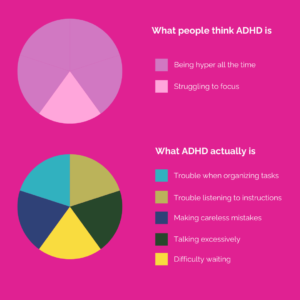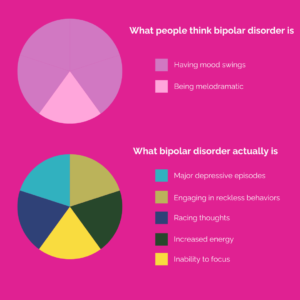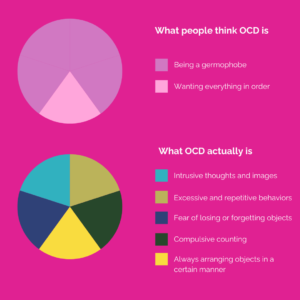For too long, individuals struggling with mental health disorders have also faced burdens of stigma and shame.
Encouraging news — in recent years, Americans have become more understanding of mental health issues, and while we can’t say stigma is nonexistent, the American Psychological Association (APA) reports that 87% of survey respondents believe a mental health condition is “nothing to be ashamed of”.
It’s good to see progress in public attitudes toward more well-known conditions such as depression and anxiety. However, we still need to combat misunderstandings and misinformation about more complex mental health conditions and disorders.
Lack of education, along with media misrepresentation, means individuals already struggling with serious mental health conditions often feel the weight of shame and the need to mask their disorder. In this blog, we want to help end the stigma by replacing some common misconceptions with facts on these often-inaccurately portrayed illnesses.
Understanding mental health conditions
Attention Deficit Hyperactivity Disorder (ADHD)
Attention Deficit Hyperactivity Disorder, commonly known as ADHD, is a condition characterized by concentration problems, hyperactivity, and impulsivity. The disorder often develops in childhood, but symptoms, particularly those related to focus and attentiveness, can also appear in the teen years or beyond.
Common symptoms of ADHD include:
- Concentration and focus problems
- Difficulty beginning and focusing on tasks or activities, especially those that are tedious, time-consuming, or require sustained mental effort
- Trouble with time perception and management
- Inability to effectively organize, prioritize, and manage multiple tasks
- Short attention span, easily distracted, trouble listening to instructions
- Frequent careless mistakes, forgetfulness and inability to keep up with daily tasks like homework or chores
Hyperactivity and Impulsivity
- Physical restlessness, such as fidgeting, tapping, or squirming in one’s seat
- Interrupting or talking excessively
- Difficulty waiting
- Impulsivity
- Risk-taking behavior
Misconceptions about ADHD
“It’s not a real disorder: it’s just laziness.”
Many people tend to dismiss individuals with ADHD as being lazy, because the disorder makes it difficult to focus on and complete tasks. ADHD is a developmental condition, not a character flaw or an attitude problem.
“It’s a childhood-only disorder”
In many cases, ADHD symptoms show up during childhood, but for others, symptoms only manifest during adolescence or adulthood. In fact, a 16-year-long study of children diagnosed with ADHD showed that 77% of participants continued to display symptoms into adulthood. (Biederman et al. 2012).

How is ADHD treated?
Typically, ADHD treatment involves medication as well as coaching in a variety of coping skills and techniques. In addition, therapists may recommend that parents of children 12 and under receive training in behavioral techniques and strategies that will help their child navigate relationships and thrive in school and at home. With this support, individuals can learn to successfully manage their symptoms and function effectively in their daily lives. People often label individuals with ADHD as scatterbrained and disorganized or believe that ADHD-driven behavior is a ‘stage’ that kids will grow out of, but it’s a lifelong mental health condition that needs treatment, coaching, and understanding.
Bipolar disorder
Bipolar disorder is a condition characterized by extreme mood swings, characterized by intense highs (mania and hypomania) and lows (severe depression).
Common symptoms of bipolar disorder include:
Manic episodes: During this cycle, which lasts for a week or longer, an individual may experience:
- an elevated mood
- increased energy levels
- racing thoughts
- recklessness
- inflated self-esteem
- a reduced need for sleep
Major depressive episodes: In contrast, the depressive cycle is characterized by intense sadness, hopelessness, anger, loss of interest in activities once enjoyed, lack of self-worth, insomnia, fatigue, and the inability to focus.
Misconceptions about bipolar disorder
“It’s just mood swings”
People misuse the word “bipolar” to describe someone who’s moody, but true bipolar disorder is notable for the intensity and duration of mania and hypomania cycles. If an individual’s mood levels off in a day or so, and they can manage ordinary tasks, they are experiencing mood swings. However, people with bipolar disorder experience repeated cycles lasting a week or more, characterized by intense symptoms that disrupt daily functioning, and even lead to suicidal ideation.
When you hear the word “bipolar”, you might think it’s just about feeling happy one moment, and then angry a second later, but this condition is far more complex, affecting an individual’s wellbeing, relationships, and ability to live normally.

How is bipolar disorder treated?
Bipolar disorder is a lifelong condition that typically appears in the teen years or early 20s and can be managed with medication and therapy. Medications like mood stabilizers can help people manage their manic and hypomanic episodes, while antipsychotics can also be prescribed if depressive symptoms continue. Patients also benefit from therapy that teaches healthy coping skills and ways to prevent the return of some symptoms.
Obsessive Compulsive Disorder (OCD)
Individuals with Obsessive Compulsive Disorder (OCD) experience unwanted thoughts and fears (obsessions) leading to rigid routines and repetitive, ritualistic behaviors (compulsions) to ease the stress of these upsetting thoughts. OCD can be disruptive and distressing, both for those who struggle with the disorder and for those trying to support them.
Common symptoms of OCD include:
Obsessions
- Fear of contamination or dirt
- Fear of losing or misplacing objects
- A need to have or do everything in a certain order
- Unwanted thoughts, including aggression and taboo images
Compulsions
- Excessive cleaning or handwashing
- Repeatedly checking one’s actions, like unplugging electronics or turning off the stove
- Inability to deviate from set routines
- Arranging objects in a particular way
- Compulsive counting
Misconceptions about OCD
“People with OCD are just neatniks (or germophobes)”
While OCD is largely associated with excessive cleanliness, neatness, tidiness, and orderliness, the disorder is more pernicious than that. People with OCD are caught in a seemingly endless, exhausting loop of behaviors, and struggle with intense feelings of discomfort and anxiety due to their obsessions.
“OCD is just a personality trait”
It’s not uncommon to hear someone say they’re “a little OCD” when they really want to say they have strong preferences or habits. Many misinterpret OCD behaviors for personality traits, but the truth is that people suffering from this disorder can’t help or control their obsessions or compulsions without treatment.
OCD is largely misrepresented by the media and others as describing someone with strong habits and routines, but it’s a disruptive condition that is often accompanied by isolation, unwanted thoughts, and strong feelings of anxiety and shame.

How is OCD treated?
OCD can be managed by therapy which seeks to address the fears/obsessions that cause compulsions. Cognitive behavior therapy together with exposure and response therapy may help build tolerance and alleviate the fears created by obsessions. (for example, gradual exposure to dirt and dust). Antidepressants may also help to relieve patients’ symptoms.
Understanding and empathy
Mental health conditions involve complex origins, symptoms and behaviors. They are often mistaken for or coexist with related disorders. Individuals who are not mental health professionals may not fully understand these complex conditions, but with greater awareness of the facts, we hope to help others avoid making uninformed, hurtful statements.
Education and empathy can go a long way toward erasing the stigma surrounding these and other conditions. Rather than perpetuating stereotypes and misconceptions, let’s promote understanding and support for all those who struggle with their mental health.
Need more help?
Here at The Bougainvilla House, we’ll provide your teen with safe and compassionate care as they learn to cope and lead a healthier life. To start their healing journey, call us at (954)-764-7337.

